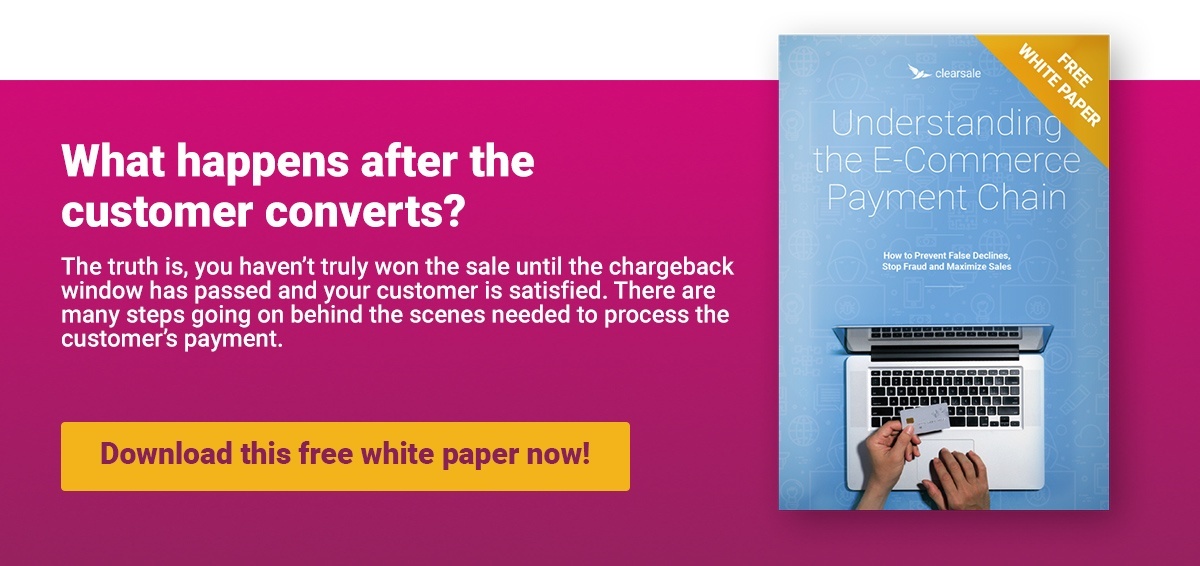The Financial Impact of False Positives on e-Commerce Fraud Detection
Here’s an all-too-common scenario for customers:
They’ve taken their time researching products and companies, looking at reviews, and comparing prices. Finally, they’re ready to pull the trigger on their purchase.
And their transaction is declined.
Often, it’s a case of false positives (also called “false declines”) — when a customer’s legitimate transaction is incorrectly rejected. False declines happen with astonishing regularity.
Here are four ways that false positives impact your business financially and what you can do about it.
An estimated 40% of U.S. shoppers have had their credit card company block or question a transaction. While it’s a major annoyance for customers, they aren’t the only ones suffering. Merchants may think that declining any suspicious-looking transactions will protect their business from false positives, but this fraud detection approach may actually do long-term damage to their business in four crucial ways.
1. Increased Revenue Losses
The most immediate threat to merchants when it comes to false positives is revenue loss. Javelin reports that U.S. merchants lose nearly $118 billion each year to falsely declined transactions, which amounts to more than 13 times as much as the cost of credit card fraud.
How do these losses look for an individual merchant?
The Merchant Risk Council’s 2017 Global Fraud Survey showed that the average online store declined 2.6% of all incoming orders simply due to fear of fraud and tightening fraud detection solutions. These same merchants declined 3.1% of all orders worth more than $100. To make up for the financial losses associated with even one falsely declined transaction, merchants might need 12 or more good transactions.
Too-stringent fraud detection solutions cause more subtle financial losses as well. E-commerce merchants also make a significant marketing investment in attracting, converting and retaining customers. Those retailers may lose a good part of that investment when a good order is declined and customers give their future business to other merchants.
2. Decreased Customer Volume
False positives may be common, but that’s of little consolation to customers experiencing one. In fact, to 82% of cardholders, declines are more than just inconvenient — they’re also embarrassing and aggravating. And these customer reactions can have a devastating, long-term effect on the relationships that merchants have worked so hard to build.
In Javelin’s survey of 3,200 U.S. consumers, 32% said they wouldn’t shop with a merchant again following a decline. If merchants aren’t paying close attention to their numbers, they may not realize how many customers are taking their business elsewhere — until those customers share their displeasure on social media.
3. Increased Reputational Damage
Anyone who’s on social media knows that unhappy customers are often the most vocal ones. American Express found in 2017 that consumers tell an average of 11 people about their good experiences, but they tell 15 about the bad. That’s a move that can quickly create extensive brand damage as complaints and frustration spread to thousands of customers and would-be customers.
Although it’s hard to quantify the exact figure of losses that stem from negative publicity, it’s certainly real. Thanks to the “negativity effect,” negative ratings and feedback tend to be perceived by consumers as more credible, influencing their buying decisions more than positive information does. And this negativity effect can be lasting. Think of how Amazon immediately displays the most helpful positive and negative reviews for a product. What do customers think when one of the first things they see when viewing products and the comments from a very unhappy customer? It’s probably not incentivizing them to purchase the product.
4. Decreased Fraud Detection Accuracy
Consider the merchants that decide to automatically reject all orders from certain countries — possibly the result of a few bad experiences or simply because the merchant just believes the country to be risky. But rejecting those orders across the board instead of based on detailed data means merchants lose two opportunities: to retain legitimate customers and to use that transaction data to make better fraud-screening decisions in the future.
Merchants experiencing increased false positives caused by incomplete transaction analysis or the use of incomplete data sets may also find that their fraud detection program’s accuracy becomes skewed over time. Over the long run, this decrease in accuracy can perpetuate and amplify losses and brand damage.
Robust Fraud Detection Minimizes False Declines
It can be hard for merchants to tell the difference between fraudulent and legitimate orders. And when merchants guess wrong, fraud and false positives can quickly become a big, expensive problem. Luckily, false positives don’t have to be an inevitable cost of doing business — if you know the right solution.
Merchants who use a hybrid fraud protection solution — one that includes a cross-functional team coupled with advanced artificial intelligence — can protect both customers and merchants against false positives. Not only does this combination provide a frictionless experience for customers and account for variable customer purchasing behavior, but it also minimizes the company’s likelihood of rejecting legitimate transactions and increases their ability to block fraudulent ones.
Learn how to tell if you have a problem with false positives — and what you can do about it — by downloading our free e-book, “Understanding the E-Commerce Payment Chain: How to Prevent False Declines, Stop Fraud and Maximize Sales.”
 Sarah Elizabeth
Sarah Elizabeth
